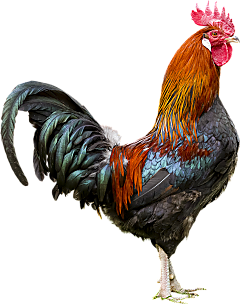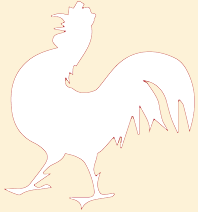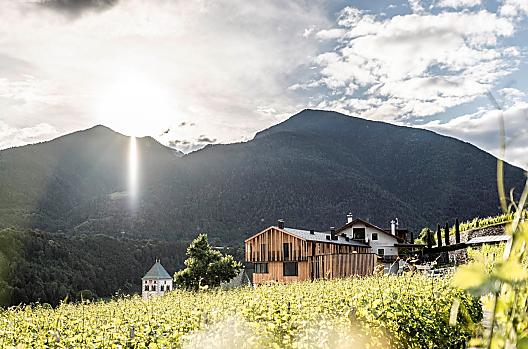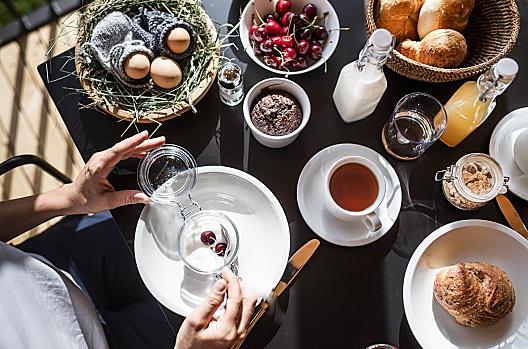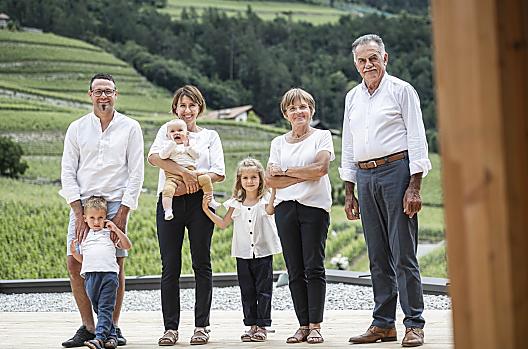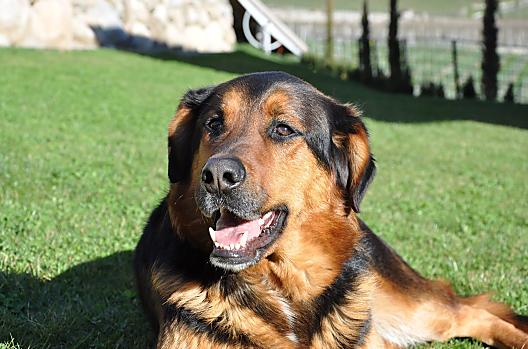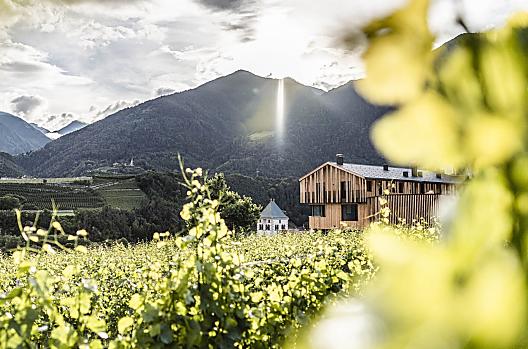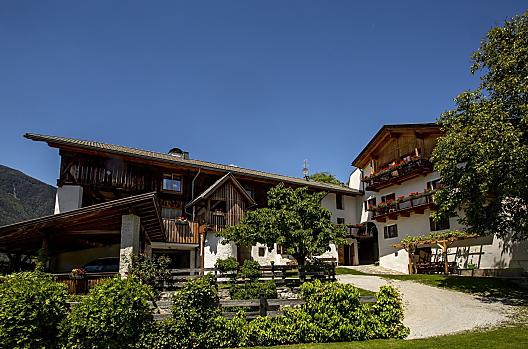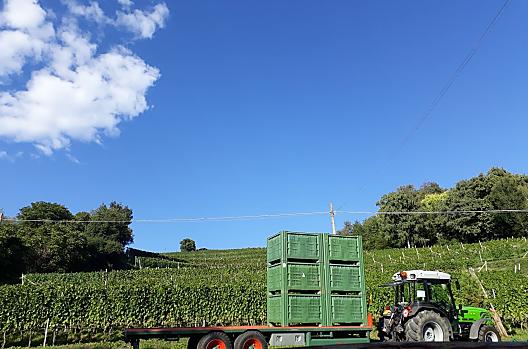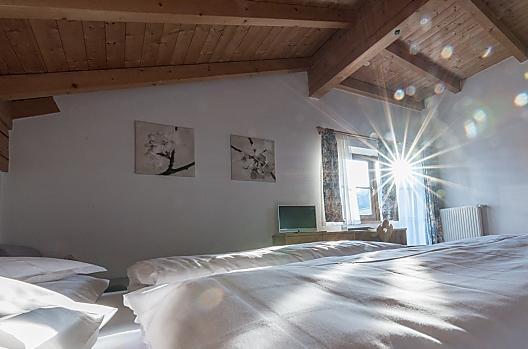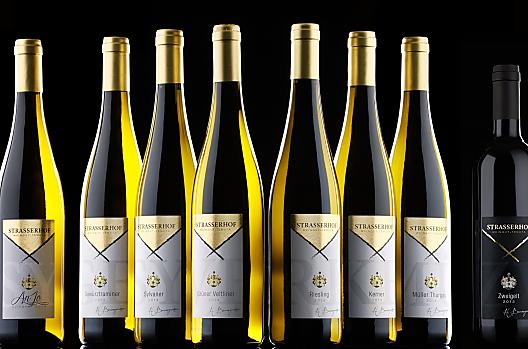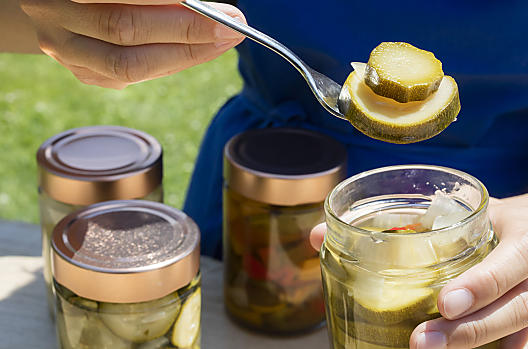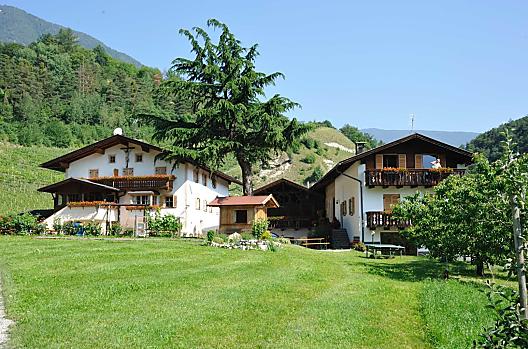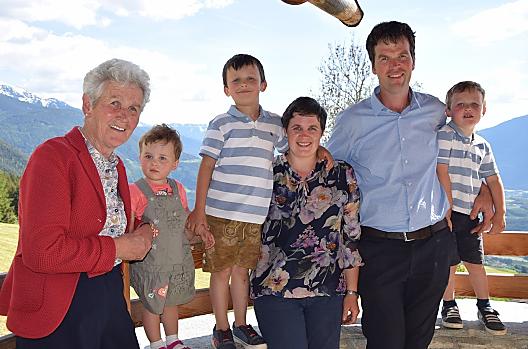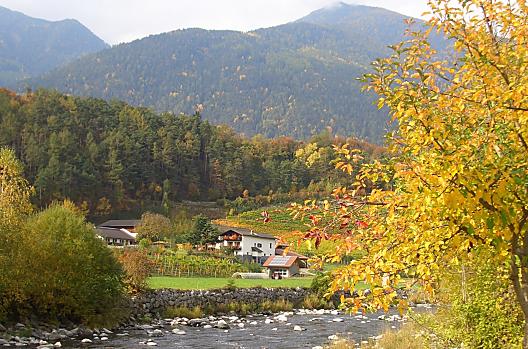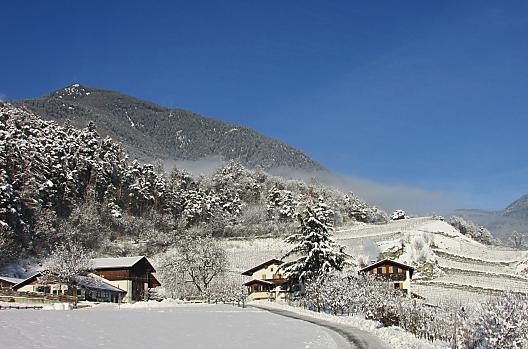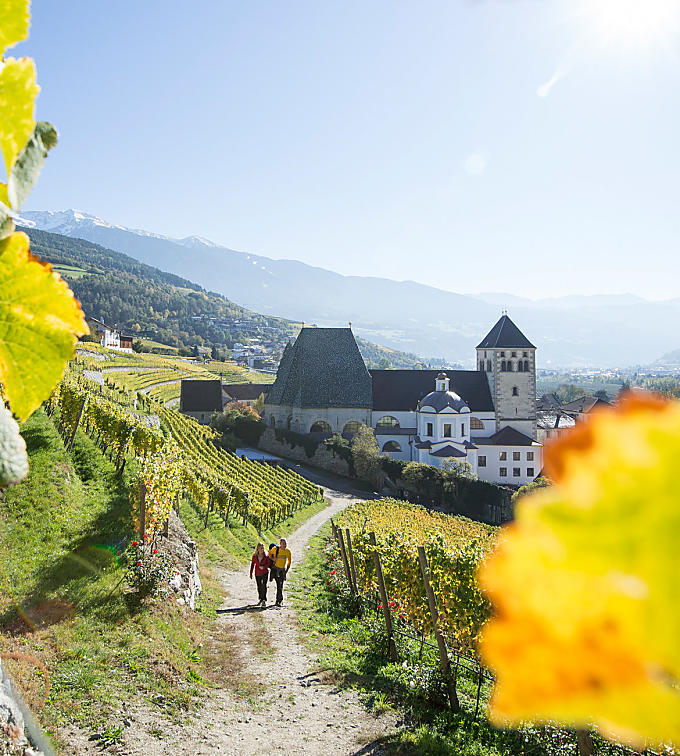
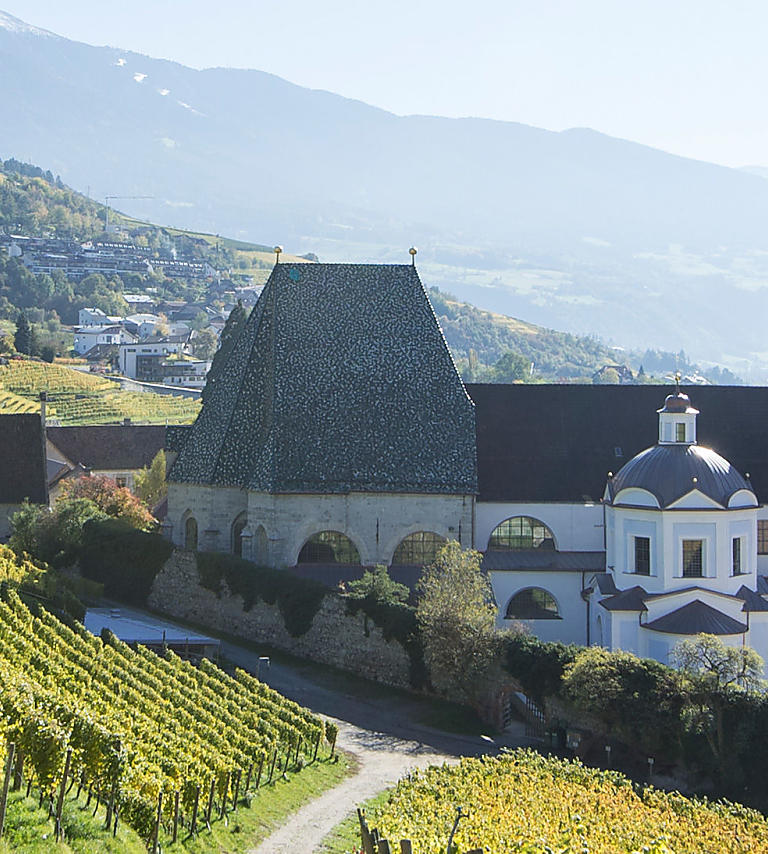
Day trip destination
Neustift Abbey: the largest abbey in Tyrol
Life still pulses through Neustift Abbey, which is one of the most remarkable cultural sights in the Eisacktal valley.
If you come from the north or east in the direction of the former episcopal town of Brixen, you can't fail to notice the various mighty and noble buildings that make up the enormous Neustift Abbey complex. Lots of self-sufficient farms form part of this diocese set amidst the most northerly vineyards of South Tyrol. The Augustine canons still live mainly from agriculture. They cultivate fruit and herbs and produce first-class wine in the diocese winery, which may be tasted along with other products from Neustift Abbey. The canons produce schnaps, apple and elderflower juice and tea mixtures. South Tyrolean specialities such as 'Speck' (cured pork), cheese, 'Schüttelbrot' (a type of crispbread) or 'Kaminwurst' sausages are also served.
Thanks to its altitude of between 600 and 900 metres, the cool climate and mineral soil, the typical white wines develop to be particularly aromatic. The red wines grow in Eppan, in the southern-lying estate of Neustift Abbey. The estate is one of the most renowned in the Eisacktal valley. The diocese has plenty of culture in store, too. It is rightly one of the twelve destinations of the Culturonda, an interactive travel guide for interesting spots all over South Tyrol.
An abbey in bloom
Neustift Abbey was once a hospice and rest house for pilgrims. It was founded in 1142 by Bishop Hartmann and had always been a place for pilgrims travelling to Rome or Jerusalem.
It had its heyday in the 15th century and at the start of the 16th century. The splendid altars of the collegiate church and the late-Gothic chancel originated during this time. In addition, the Abbey became the cultural and scientific centre of Eisacktal valley at that time. The convent school produced some excellent scientists, artists, philosophers and theologists.
In the 16th century, Neustift Abbey was occupied in the course of the Tyrolean peasants' revolt, and was extended and refurbished in the 17th century. At the start of the 1970s, the students' home and a tourist centre were founded. Today, over 850 years after the Abbey's foundation, the canons are responsible for pastoral care in over 20 parishes. A electricity plant and training centre with a comprehensive and varied programme also belong to the Abbey.
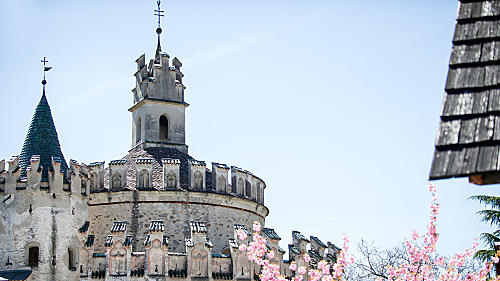
Finding peace
The historical Abbey gardens at the start of the Abbey grounds are a place of calm. You can recharge your batteries three times a week and admire the plant world there. There are ginkgo trees, a redwood and 75 different herbs, such as St. John's Wort, bread clover, lemon balm, pineapple sage and tabacco.
Flowerbeds surround pretty fountains, a fishpond and an aviary. In autumn, there are grapes hanging from the vines at Neustift Abbey.
A visit to the late-Baroque collegiate church, which is bathed in light and a popular place for weddings with its Gothic, Romanesque and Baroque architectural components, is especially interesting. Its bell tower is particularly impressive. A cloister with Gothic arches and frescoes by various artists is attached to the church.
The library featuring 92,000 volumes and a large hall in Rococo style is worth seeing at Neustift Abbey. There are unique manuscripts, Gothic panelling and altars, scientific and historical instruments on display in the historical picture gallery. Engelsburg chapel, a former chapel recreated in the style of Castel Sant Angelo in Rome, may be found in the forecourt, so to speak, of the Abbey. Inside the Abbey there is the so-called Miracle Fountain: the seven wonders of the world are depicted on its roof, and – as an eighth world wonder – Neustift Abbey. Going on one of the regular guided tours will interest culture lovers, too.
Neustift Abbey
Further information
Monastery of Novacella was founded by the blessed bishop Hartmann in 1142 as an Augustinian monastery. Thanks to its monastery school it became one of the most important centre of education and art. In 1742 the monastery was the largest in Tyrol, the Romanesque abbey church of Abbazia di Novacella was redesigned in Baroque style. Unique at the monastery of Novacella is the round building of Castello dell'Angelo, former hostel and defence facility. The Gothic cloister benefits from valuable frescoes, while the well in the courtyard depicts the wonders of the world. The 8th wonder is said to be Novacella. The Rococo library of the monastery of Novacella is uniquely beautiful, the Pinacoteca houses medieval paintings by outstanding masters Michael and Friedrich Pacher and Marx Reichlich. The Turkish wall dates back to turbulent times. The mill, water buildings and wine cellar point to the economic importance of the monastery. The area around the monastery is the northernmost winegrowing region of Italy with the well-known white wines Sylvaner, Müller-Thurgau and Kerner.
Other information about the monastery of Novacella
Visit without guide from Monday to Saturday from 10:00am to 5:00pm
The historical garden: The historical garden is situated at the entrance to the monastery complex. It reopened in summer 2004 following extensive restoration work. The monastery garden can be visited indipendently from Thuersday to Saturday from 10:00 am until 5:00 pm
The monastery of Novacella is closed on Sundays and Catholic Holidays.

